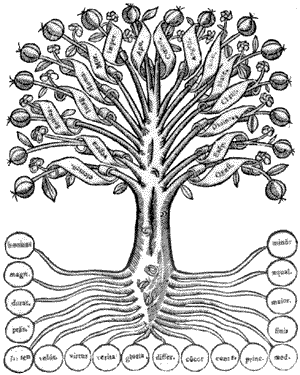Verstorbene, le défunt, difunto, finado, deceased
El «difunto1» que, a diferencia del «muerto», le ha sido arrebatado a sus «deudos», es objeto de una (particular) «ocupación» en la forma de las honras fúnebres, de las exequias, del culto a las tumbas. Y esto ocurre porque el difunto, en su modo de ser, es «algo más» que un mero útil a la mano, objeto de posible ocupación en el mundo circundante. Al acompañarlo en el duelo recordatorio, los deudos están con él en un modo de la solicitud reverenciante. Por eso, la relación de ser para con los muertos tampoco debe concebirse como un estar ocupado con entes a la mano. (SZ:238; STRivera:255-256)
VIDE: Verstorbene
le défunt (ETEM)
the deceased: der Verstorbene H. 238 f (BTMR)
Because the “existential concept of death” pertains precisely to what belongs to us each individually (in the first person, as it were), it is not to be confused with the deceased (Verstorbene), the perishing (Verenden) of something alive, the demise (Ableben) of others, or the absence of what is “not yet.” In regard to the deceased, our loss is not theirs nor can it be, since death in the existential sense is not shared. We are in stricto senso never on-hand but always “here,” whereas the corpses that we come to be in perishing are precisely not “here” (SZ 241). In other words, dying is not perishing because perishing entails the accessibility of what perishes as something on-hand, ante mortem and post mortem (SZ 248). Biological– physiological, medical, psychological, biographical–historical, ethnological, and theological studies of death investigate Dasein’s demise, an “intermediate phenomenon,” co-determined by conceptions of perishing and the existential conception of dying. Death is also not anything like the absence of what is not yet the case—an unpaid bill, a full moon, a ripened fruit—since these are endings of something on-hand or handy. “In death Dasein neither is completed (53) nor has it simply disappeared, nor has it become finished at all or fully accessible as something handy” (SZ 245). (DahlstromHD)
NT: El «difunto»: en alemán, der «Verstorbene». En alemán hay una diferencia entre el «meramente muerto» (der Gestorbene) y el difunto (der Verstorbene). Esta última palabra se usa, por ejemplo, para hablar de los muertos de la familia, de los muertos que se recuerda. En cambio, la palabra Gestorbener significa simplemente alguien que ha dejado de vivir. En este caso se piensa en el muerto, por así decirlo, hacia atrás: es el que vivía antes y ahora ya no vive. En cambio, el Verstorbener, el difunto, es el que pervive en el recuerdo de sus parientes o de sus conciudadanos. ↩
